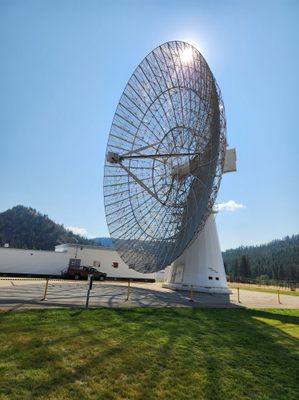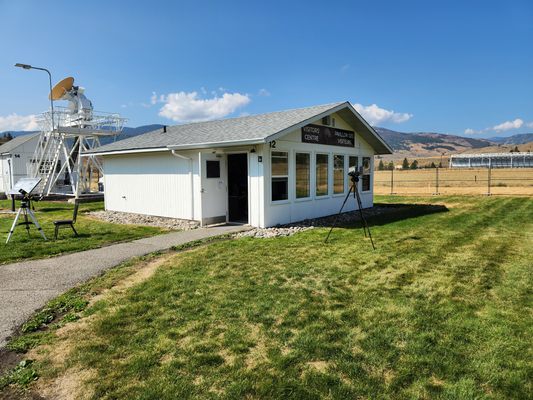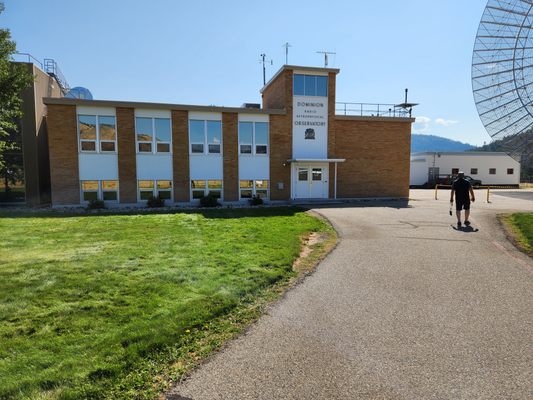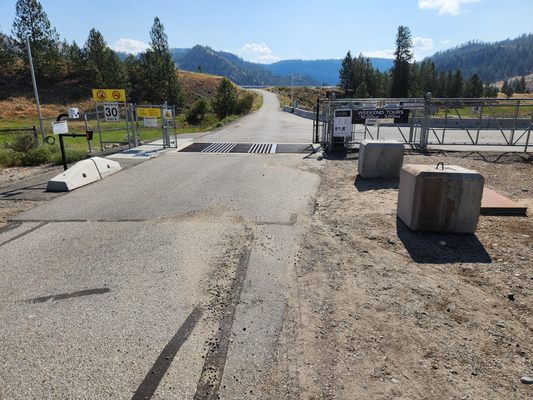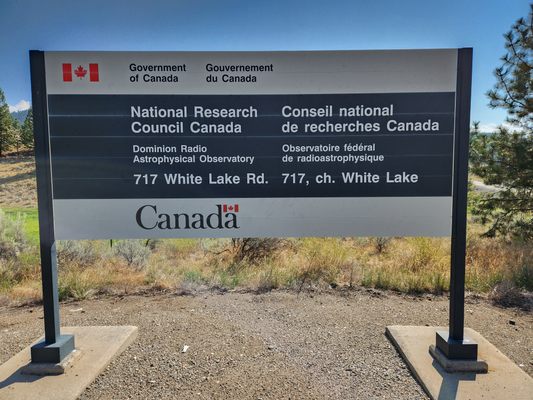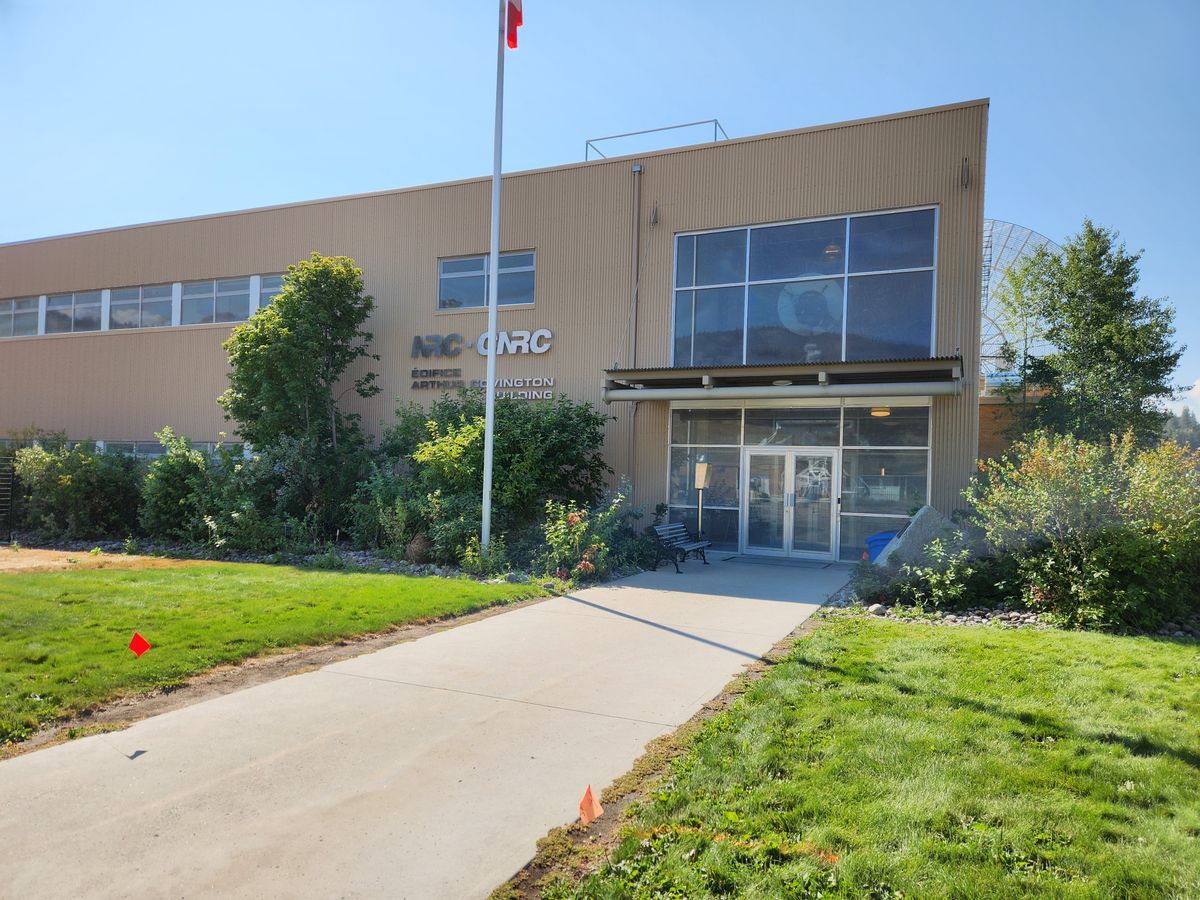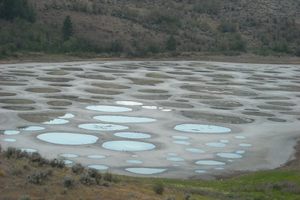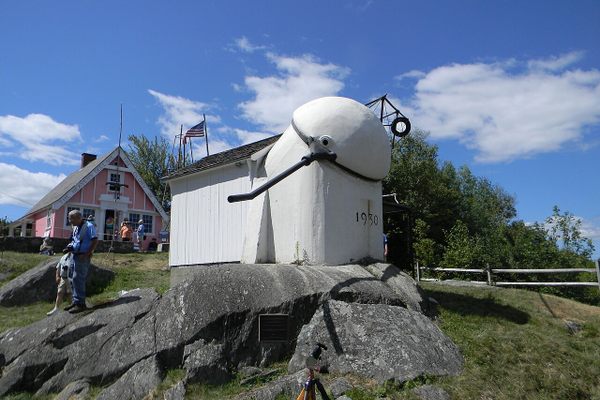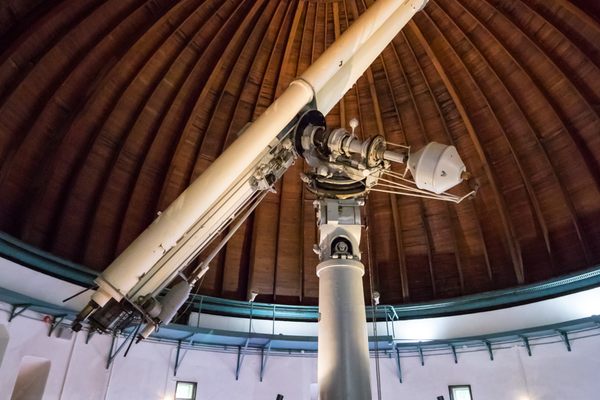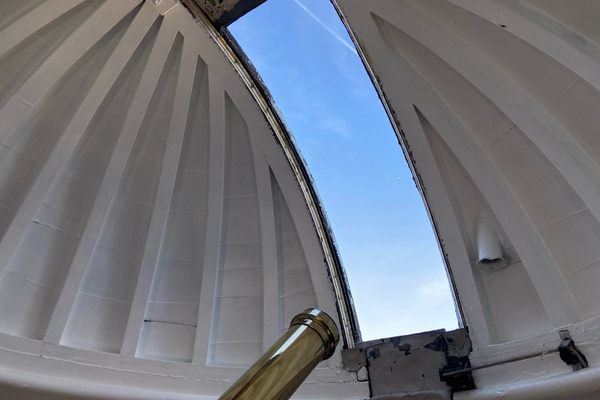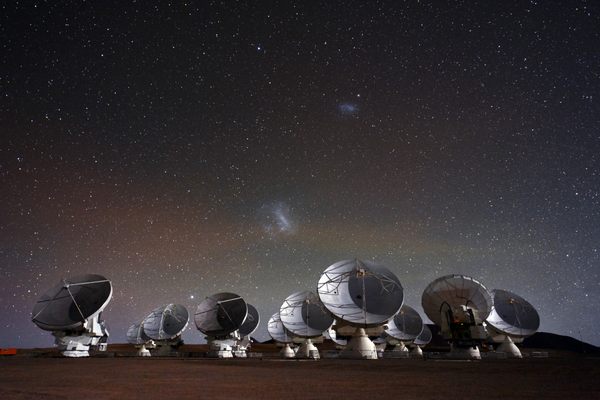About
The birth of the Dominion Radio Astrophysical Observatory (DRAO) dates back to the late 1950s, with a suggestion by Dominion Astronomer C.S. Beals that a radio observatory be built to study the interstellar medium (ISM). This site was chosen in 1958, and the first radio telescope, the 26-meter (85 foot) dish, was completed in 1959. This telescope, now called the John A. Galt telescope after a former director of DRAO, is still operational, its electronics having been upgraded repeatedly over the last six-plus decades.
In the 1960s, low-frequency (by radio astronomy standards) 10 megahertz and 22 megahertz surveys of the sky were carried out. Although initially directed toward studies of then newly-discovered quasars, the surveys have proved valuable to the present day. Part of the 22 MHz array, consisting of wires strung between wooden poles, survives even now, although it is no longer operational.
A further quasar-related study was carried out in 1967, when the first successful transcontinental very-long baseline interferometic (VLBI) measurement of a quasar with the Algonquin Radio Observatory in Ontario. In this study, the two radio telescopes were linked together electronically to act as a single telescope with an effective diameter of about 3,100 kilometers, providing better resolution of the imaged objects. Radio waves, which have wavelengths much longer than light, need a much larger telescope diameter to yield detail comparable to optical images.
A synthesis telescope array was constructed in the 1970s and consists of smaller dishes whose spacing can be varied along a railroad track. This array was upgraded to four antennas around 1980 and was used to carry out the Canadian Galactic Plane Survey in the 1990s through early 2000s. Data from the different antennas are combined into a single image by computer.
CHIME, the Canadian Hydrogen Intensity Mapping Experiment, uses special antennas to map the distribution of hydrogen, the simplest and most abundant element in the cosmos. The CHIME array could detect a single cell phone isolated in space at a distance 20 times that of the Moon—which is why cell phones need to be turned off completely at the observatory! (The area surrounding the Green Bank Telescope in West Virginia has a similar limitation.) The CHIME observations have proved unexpectedly useful in finding Fast Radio Bursts (FRBs), extraordinarily energetic events occurring far beyond our galaxy whose origin is currently completely unknown.
In the 2010s and up to the present, DRAO has been participating in an international consortium surveying the polarization of radio emissions across the sky. This represents a return to studies of the interstellar medium, and the venerable 26-meter dish is again playing a role.
The Solar Radio Monitoring Program, which records the radio output of the Sun daily, has been based at DRAO since 1990. Its data on "space weather" are distributed worldwide.
As part of all these efforts, DRAO has been heavily involved in technology development, including digital processing, in collaboration with other observatories around the world.
Related Tags
Know Before You Go
The Dominion Radio Astrophysical Observatory is easy to find. The turnoff is off White Lake Road at about 49.32185 N, 119.62923 W. This junction is 7.1 kilometers from the junction (at about 49.37617 N, 119.61341 W) with BC Highway 97 on the north. Alternatively, you can turn south at the junction (at about 49.34263 N, 119.72289 W) of Twin Lakes Road with BC Highway 3A on the northwest. In 3.5 kilometers this intersects White Lake Road; turn left (east) and proceed 6.7 kilometers to the observatory gate as above.
The observatory is open to the public only on weekends (check the website for details). The gate, normally locked, will then be open and visitors may drive up to parking by the observatory itself.
Please turn off all cell phones; don't just put them in "airplane mode." The electronics, even when not actively transmitting communication signals, puts out signals that can be extremely disruptive to the extraordinarily sensitive receivers. However, a conventional digital camera, which is much less disruptive, can be used.
Community Contributors
Added By
Published
December 5, 2024

